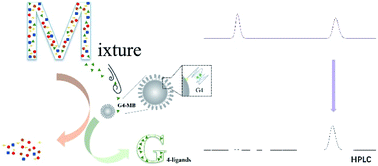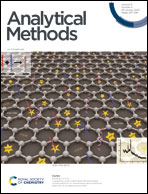A novel approach for the screening analysis of anticancer compounds from traditional Chinese medicine by a G-quadruplex functionalized magnetic system†
Abstract
G-quadruplex (G4) is a four-stranded DNA structure, which is commonly over-represented in gene promoter regions and viewed as an emerging therapeutic target in oncology, as the transcriptional repression of oncogenes through the stabilization of the G4 structure could be a novel anticancer strategy. Traditional Chinese Medicine (TCM), whose agents have diversity in structure and bioactivity, provides an abundant source of G4 ligands. Herein, we present a G4 functionalized magnetic system for screening potential anticancer compounds from TCM. In this system, magnetic microbeads were functionalized with G4 DNA that served as signal molecular nanocarriers. The results showed that the method was able to screen out the targeted molecule(s) with high G4-affinity from the mixture. With the thus established system, several protoberberine alkaloids, the G4 ligands, were successfully screened out from two TCMs, namely, Rhizoma Coptidis and Cortex Phellodendri Chinensis. Compared with the reported screening systems, the G4 functionalized magnetic system developed in this work is simple and easy-to-operate, and can screen out G4-specific binding agents with high specificity and high sensitivity. The method will prospectively promote the discovery of novel active therapeutic drugs or diagnostic probes in the future.



 Please wait while we load your content...
Please wait while we load your content...